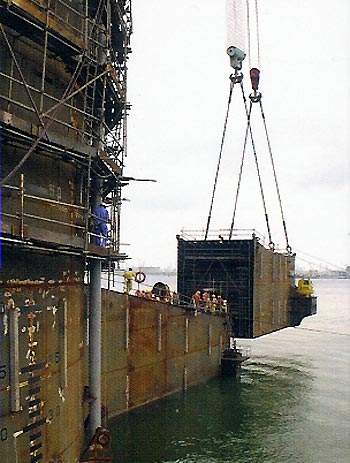The Matterhorn field is located in Mississippi Canyon Block 243 in the deepwater Gulf of Mexico, approximately 170km south-east of New Orleans, US.
The field, which lies in 850m of water, came onstream in November 2003 and has a production capacity of 33,000 barrels of oil equivalent per day.
The Matterhorn field was wholly owned and operated by TotalFinaElf E&P USA. In April 2010, Total sold its 100% interest in the field to W&T Offshore.
Matterhorn discovery
The Matterhorn field was discovered in 1999 with the drilling of the Matterhorn discovery well.
The well was drilled by Global Marine Celtic Sea semi-submersible to a depth of 8,165ft. The well encountered 370ft of oil.
Field geology
The Matterhorn field area is of the Plio-Pleistocene age and features multilayer sands with five reservoirs. These reservoirs are stacked between 6,000 and 11,000ft below sea level.
Development of Matterhorn
The Matterhorn field’s reservoir had a limited extension so Total decided to drill all the production wells from a single location. The wells were drilled and completed in three reservoirs by the Ensco 7500 semi-submersible rig.
After examining a number of development options, the designers settled on the use of a mini tension leg platform.
The company opted for an Atlantia SeaStar design of the type previously installed on deepwater projects such as Chevron’s Typhoon and British-Borneo’s (Agip) Morpeth and Allegheny fields. Because of the field; however, a larger version than the existing designs was deemed necessary.
Matterhorn mini-TLP
The Matterhorn platform, at 4,500t, stands as the biggest of its type – double the size of previous units and the first unit of this design to incorporate supporting vertical access production flowlines running through the central moonpool and controlled by surface (dry) trees.
The fabrication of the Matterhorn SeaStar hull structure began on 28 January 2002 and was completed by the end of the year. The construction is based on a relatively large central main column with a diameter of 84ft. It has a design draft of 104ft.
At the base of the column are three pontoons that project out to give the structure an effective radius of 179ft. At the point where they are attached to the main column the pontoon heights are 42ft; however, these taper down to just 27ft at the tip.
This hull structure is designed to support a payload 16,850kips (thousand pounds). The hull will weigh approximately 12,280kips, of which the primary hull structure will account for 10,420kips. Altogether, the platform has a displacement of 52,800kips.
In early 2003, the structure was sailed out of Keppel Fels yard across to Pascaguola, Mississippi, to await mating with the topsides.
Matterhorn topsides
The Matterhorn topsides design is distributed over three decks. This deck arrangement was constructed at the Gulf Marine Fabricators in Ingleside, Texas.
The deck free board is designated at 69ft and the decks have an area of 140ft². The operating weight of the decks and facilities is 13,350kips.
In order to process the Matterhorn hydrocarbons the platform design has process capacities of 35,000bpd of oil, 55 million standard cubic feet per day of gas, 20,000bpd of water treated and 30,000bpd of water injected.
The wellbay design is centred on nine well slots although production flows through risers in only seven of them. Located at the top of the platform is a Super Sundowner XVI 1,000hp drilling rig. Total also has one subsea injector well on the seafloor, leaving capacity for future tiebacks.
The design includes quarters for 22 men.
The Matterhorn TLP is connected to the seabed by six 32in neutrally buoyant steel tubular tendons. These were fabricated by Kiewit Offshore Service, also in Ingleside. Each tendon is secured by means of an independent, 96in-diameter, 415ft pile at the seabed, fabricated by Gulf Marine Fabricators. At 400t, the piles are among the heaviest ever installed.
The offshore installation was carried out by Heerema’s Balder crane vessel.
Matterhorn contracts
The contract for the hull was won by Keppel Fels in Singapore, making Matterhorn also the first one built outside of the Gulf of Mexico.
Paragon Engineering was responsible for the design of the topside facilities, employing the 3D Plant Design Management System (PDMS). The company expended over 60,000 man-hours on the design.
The steel tubular tendons to connect the TLP were fabricated by Kiewit Offshore Service. The 415t piles for the tendons were fabricated by Gulf Marine Fabricators.








